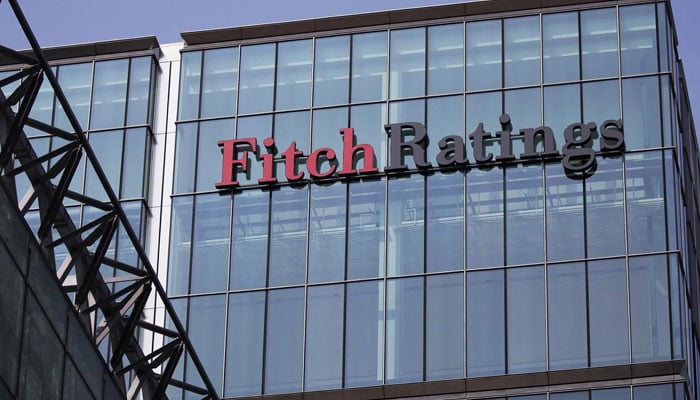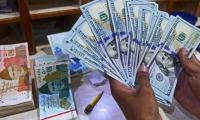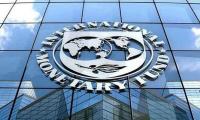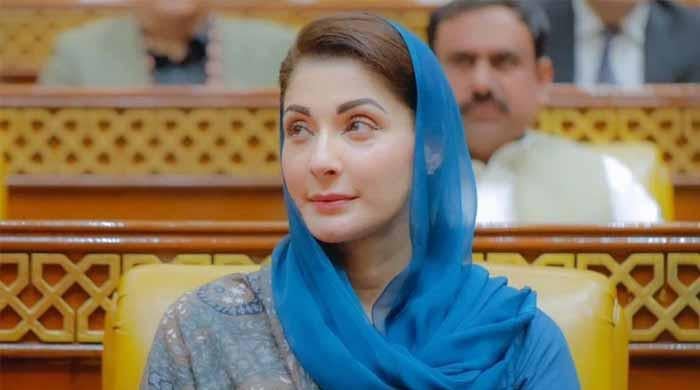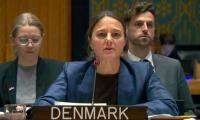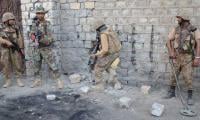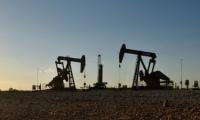Fitch downgrades Pakistan rating from stable to negative
Rating agency affirms long-term foreign-currency issuer default rating at 'B-'
In view of the worsening liquidity and limited external funding since the beginning of this year, Fitch Ratings on Monday downgraded Pakistan's outlook to negative from stable, while affirming its long-term foreign-currency (LTFC) issuer default rating (IDR) at 'B-'.
In a statement, Fitch Ratings said that the revision of the outlook to negative reflects a significant deterioration in Pakistan's external liquidity position and financing conditions since early 2022.
“We assume IMF board approval of Pakistan's new staff-level agreement with the IMF, but see considerable risks to its implementation and to continued access to financing after the programme's expiry in June 2023 in a tough economic and political climate,” read the statement.
The international credit rating agency maintained that the renewed political volatility cannot be excluded and could undermine the authorities' fiscal and external adjustment, as happened in early 2022 and 2018, particularly in the current environment of slowing growth and high inflation.
Political uncertainty
In its report, Fitch said that former prime minister Imran Khan, who was ousted in a no-confidence vote on 10 April, has been demanding early elections and staging large-scale protests and public gatherings in the country.
The new government, however, is supported by a disparate coalition of parties with only a slim majority in parliament. Regular elections are due in October 2023, creating the risk of policy slippage after the conclusion of the IMF programme.
Falling reserves
Giving another reason for downgrading Pakistan’s rating, Fitch said that limited external funding and large current account deficits have drained foreign exchange reserves, as the State Bank of Pakistan (SBP) has used reserves to slow currency depreciation.
It said that liquid net FX reserves at the SBP declined to about $10 billion or just over one month of current external payments by June 2022, down from about $16 billion a year earlier.
External deficits
Fitch said, “We estimate the CAD reached $17 billion (4.6% of GDP) in fiscal year ended June 2022 (FY22), driven by soaring global oil prices and a rise in non-oil imports boosted by strong private consumption.”
Fiscal tightening, higher interest rates, measures to limit energy consumption and imports underpin our forecast of a narrowing current account deficit to US $10 billion (2.6% of GDP) in FY23, read the statement.
The rating agency said that they estimate that the fiscal deficit widened to 7.5% of GDP (nearly Rs5 trillion) in FY22, from 6.1% in FY21. Tax reductions and subsidies on fuel and electricity account for most of the fiscal deterioration; these were introduced by the previous government in February and lasted until June.
It said that they expect a narrowing of the deficit to 5.6% of GDP (about Rs4.6 trillion or US $22 billion) in FY23, driven by spending restraint as well as by expanded taxation, including higher corporate and personal income taxes and increases in the petroleum levy. Our forecast of the fiscal deficit is about 1% of GDP wider than the authorities' target.
High inflation
Fitch said that consumer price inflation averaged 12.2% in FY22 but accelerated to 21.3% year-on-year (6.3% mom) in June on hikes to petrol and electricity prices. The SBP forecast inflation of 18%-20% in FY23, as it raised its policy rate by 125bp to 15% at its most recent action on 7 July. SBP's latest action took cumulative rate hikes to 800bp in this latest tightening cycle.
It said that their forecast of average inflation of 19% in FY23 and 8% in FY24 largely reflects base effects, but recent and planned future energy price hikes will all fuel broad-based inflation and mean inflation is skewed to the upside.
-
Security forces gun down 30 terrorists in multiple IBOs in KP: ISPR
-
MQM-P calls for new province in Sindh
-
US report validates Pakistan military edge over India: PM
-
Banned TTP poses serious threat to Pakistan security: UNSC panel
-
CM Afridi clarifies remarks on by-poll after ECP requests army deployment
-
Dubai sees 3.2m Pakistani passengers in 2025 as airport sets new milestone
-
Security forces kill 23 Indian proxy terrorists in KP's Kurram
-
Pakistan to construct island to boost oil exploration: report
